Go beyond one of Africa’s most sought-after destinations with Alicia Erickson. Here are five other experiences on the Zambian side of Victoria Falls.
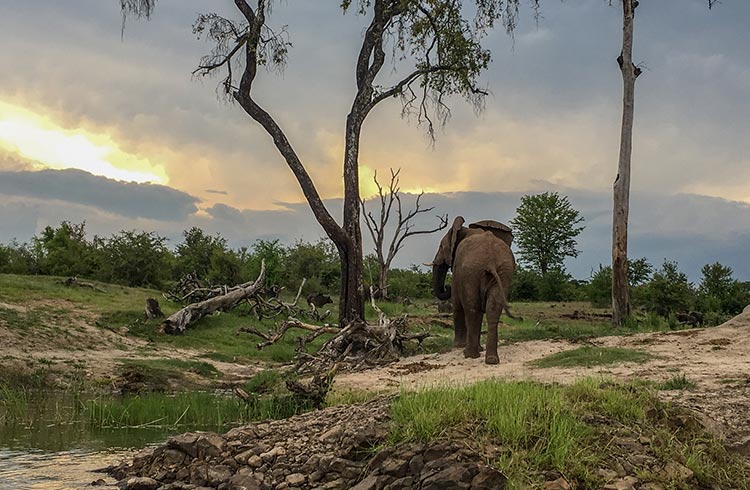 Photo © Alicia Erickson
Photo © Alicia Erickson
- Victoria Falls
- Hike to Boiling Pot
- Livingstone
- A Game Drive
- A Boat Ride Down the Zambezi
- Sindabezi Island
Welcome to Victoria Falls
Early morning light reflects off the water cascading down Victoria Falls’ 350ft-high (108m) canyon walls. Walking along the steep cliff edge, the deep roar of the falls is deafening, and a steady spray soaks me. A double rainbow arches over the mist rising from Victoria Falls, aptly named Mosi-Oa-Tunya, which means “The Smoke That Thunders” in the local Kololo language.
Douglas, our local guide for the weekend, interrupts my thoughts, “Many people don’t like to visit this time of year, as February is rainy season. I think it’s perfect. Before rainy season, the falls are too dry, and after, the falls have too much water and it’s difficult to see the rocky formations.”
I have always wanted to see the mighty Victoria Falls, but I was afraid the experience would be ruined by high tourist numbers. In 2024, Zambia recorded approximately 2.19 million foreign arrivals—an increase of more than 35 % compared with 2023. The numbers are only expected to rise. However, on an early morning in February during wet season, the skies are clear and I’m lucky there’s hardly another visitor around.
They are a magnificent sight, but there is more to see just beyond the famous falls.
1. Hike to Boiling Pot
The 1.5mi (2km) Boiling Pot hiking trail is well-marked, and starts at the parking lot of Victoria Falls lookout (on the Zambian side) along an easy-to-follow pathway.
We navigate a jungle of thick overhanging vines and wide palm leaves down a sloping forest floor, and cross streams via a series of slippery rocks. After about an hour of walking, we cross a small bridge where the rainforest opens up, leading to the Boiling Pot, a section of the Zambezi River known for its powerful rapids. I see a family of baboons and their babies swinging between trees, vying for our attention.
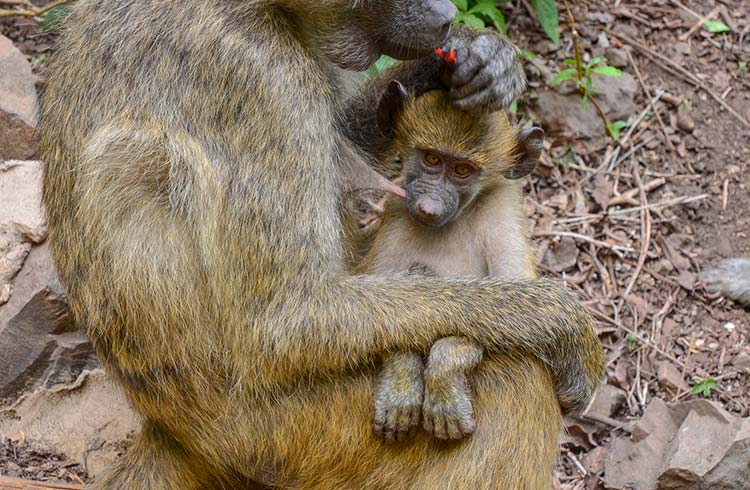
Boulders provide a welcome resting place to sit and listen to the powerful rushing river that cuts through canyons framed by the Victoria Falls Bridge.
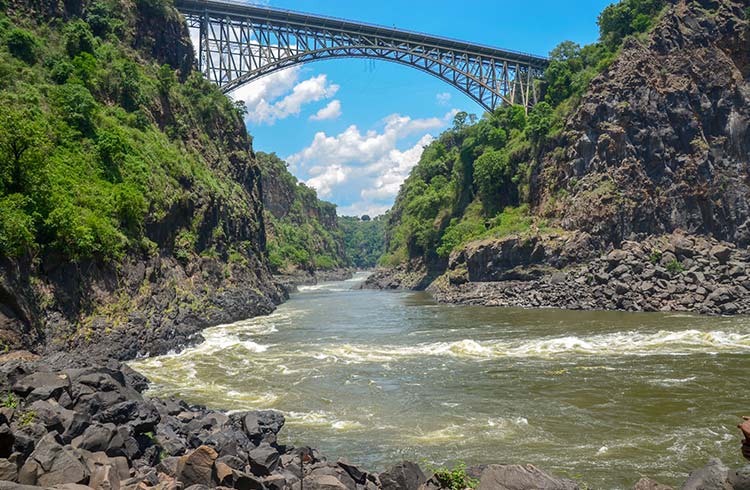
2. Livingstone - Zambia’s First Capital
Around 7.5mi (12.5km) north of Victoria Falls, the historic town of Livingstone was Zambia’s (or Northern Rhodesia as it was then) capital, between 1911 and 1935. The intricately carved white buildings are a reminder of British colonial rule, alongside local single-story, brightly-painted concrete houses, an indicator to the ever-evolving influences in Livingstone.
Livingstone developed fast in the early 20th century to keep up with the demands of visitors to Victoria Falls. Although the capital was eventually relocated to Lusaka in central Zambia in 1964, Livingstone remains the country’s tourism center.
Livingstone can be easily explored on foot, traffic and crime are minimal, and there's an easy-going pace of life. While English is widely spoken, learning a few words of the local Tonga language will help you make friends. “Wabonwa!” means “Hello!”
While the Tonga tribe is dominant in Southern Zambia, Livingstone has become a melting pot for tribes and languages, and Zambians from all backgrounds move across the country for work opportunities in tourism.
Railroad tracks traverse the town center, a reminder of the failed plan by British businessmen to connect and conquer the African continent by rail. Spend an afternoon browsing Maramba Market to see Kitenge textiles in bold patterns, and tables stacked high with mangoes, pineapples and grains. If you’re feeling brave, let your sense of smell guide you to the section of the market dedicated to livestock and fish, at the mercy of the hot sun and curious flies.
3. A Game Drive in Mosi-Oa-Tunya National Park
Mosi-Oa-Tunya National Park, a 45-minute drive from Livingstone, is Zambia’s smallest national park at just 25mi² (66km²). Founded in 1972, it’s on the upper Zambezi River, on the Zambian side of Victoria Falls and in its grasslands zebra, giraffe, antelopes, warthogs and other species roam. Safaris in the park start in Livingstone, or from accommodation along the Zambezi River.
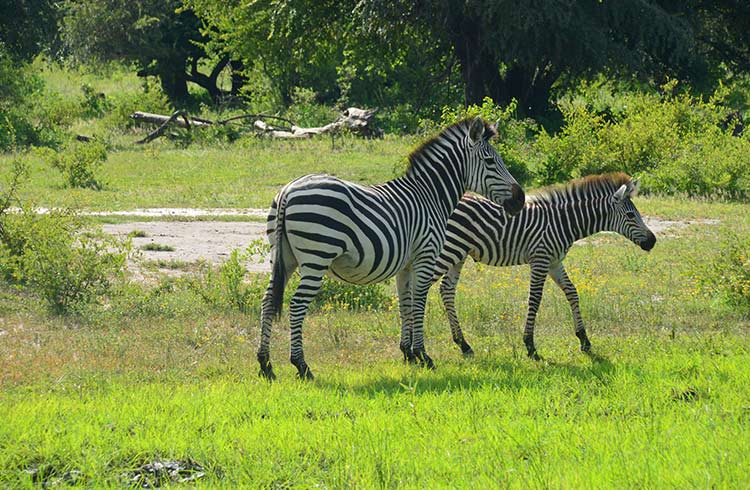
There aren’t any predators in the park, so wildlife roams freely, including the white rhinos the park is famous for. Once approaching extinction, repopulation efforts in 1998 and 2008 have increased the population to 13, and the park has a rhino protection team working 24/7 to keep poachers at bay.
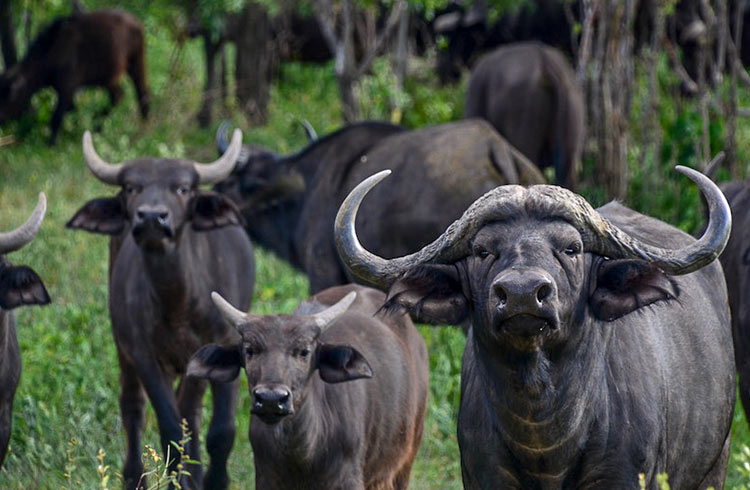
We see herds of antelope pass in front of our Land Rover, and wildebeest trail behind them. Among the grasslands, zebra drink from pools of rain water and buffalo graze beneath fever trees. We slowly drive behind giraffes, who are gracefully swaying side to side. During the wet season, between November and April, the park is a vibrant green.
4. A Boat Ride Down the Zambezi
River safaris along the Zambezi River, at sunrise and sunset, leave from Mukuni village and take in the thick vegetation that lines the riverbank. We see hippos lazily surfacing from the water, and elephants drinking from the river.
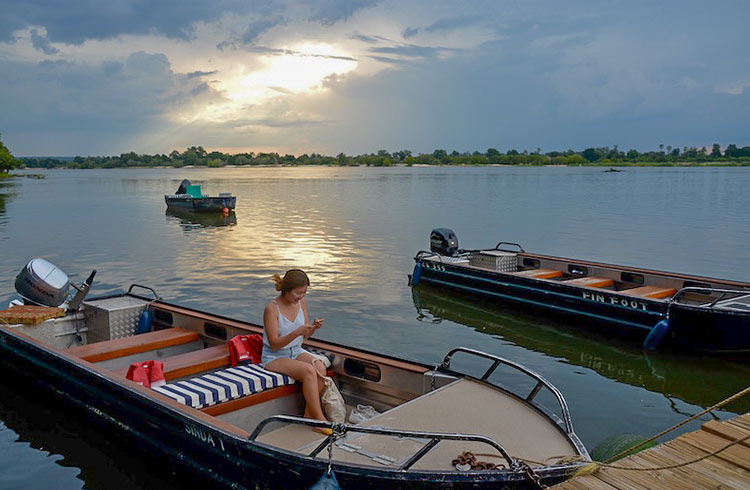
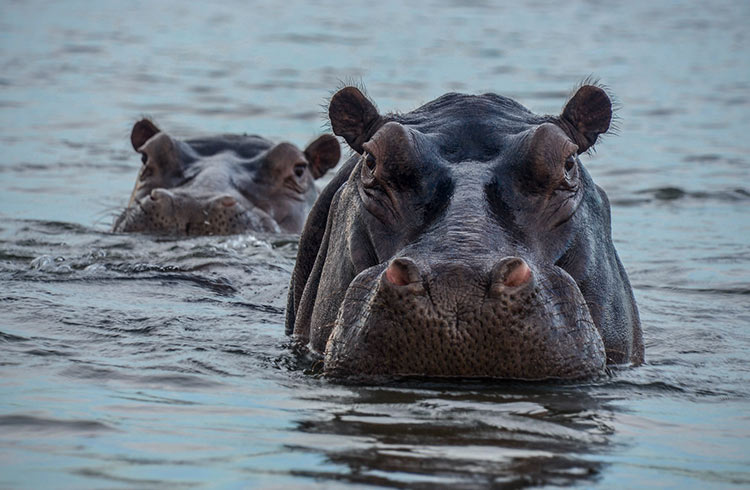
A herd of elephants emerges from the bush, sucking water into their trunks, spraying themselves to cool off. A baby elephant walks shyly behind its mom. Another slides down a hill and rolls in the mud.
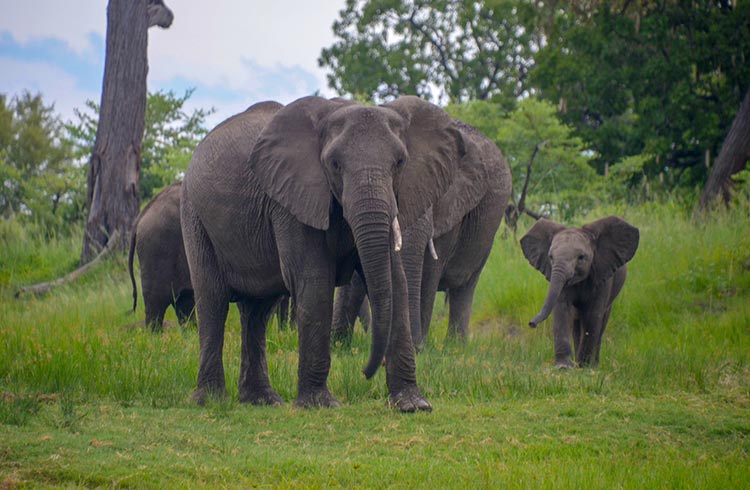
At this time of the year, many elephants come here in search of water, but in the dry season, they cross into Zimbabwe to drink.
The boat pulls off to a sandbar just in time to watch the sun spill shades of coral and gold across the sky.
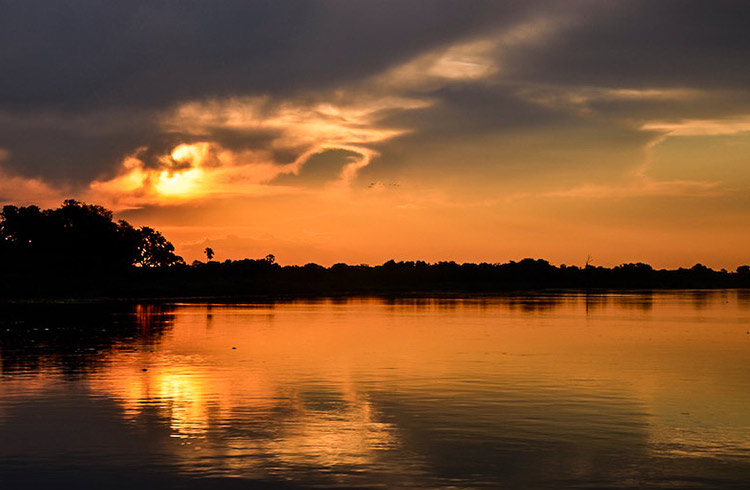
5. Sindabezi Island
Boats leaving from Tongabezi Lodge in Mukuni village take visitors to the sandy shores of Sindabezi, a small island in the Zambezi River, about an acre square, and the only fully-sustainable island on the Zambezi. Everything is solar-powered, and the cooking is done with gas. Meals are sourced from the on-site garden using local produce.
The island was once uninhabited until about a decade ago when a bush camp was built. Accommodation is in one of five open-air tents, and the island is off the electrical grid, giving us the opportunity to completely disconnect.
Hammocks and lounge chairs are placed beneath the shade of trees, the perfect spot for afternoon reading and elephant-spotting.
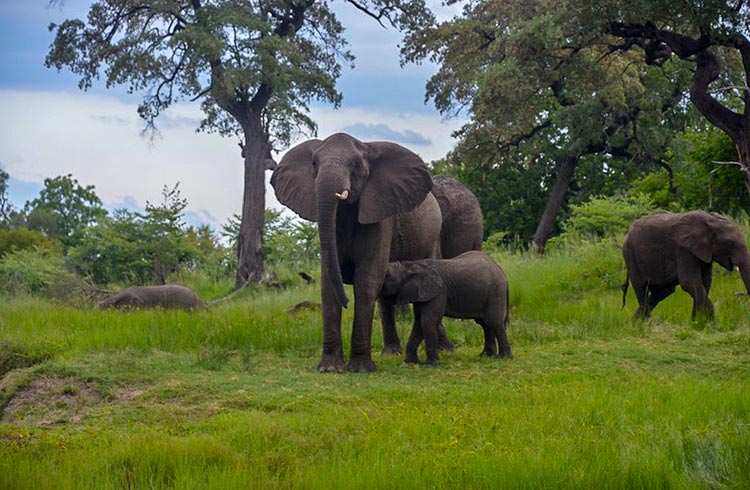
We spend the night around the fire, looking up at the Southern Hemisphere’s spectacular spread of stars including the Big Dipper, the Milky Way, and Orion’s Belt.
A chorus of crickets chirping and hippos grunting stirs me awake early. I lounge in the hammock and watch the sun rise over the river. Across the bank, I see elephants walk down for a morning drink.
Far from the powerful Victoria Falls, Sindabezi Island is a slice of peace in an otherwise wild destination.
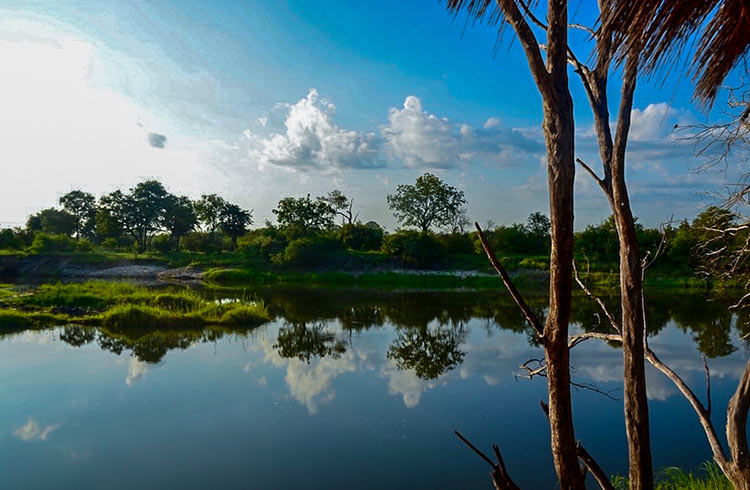
Related articles
Simple and flexible travel insurance
You can buy at home or while traveling, and claim online from anywhere in the world. With 150+ adventure activities covered and 24/7 emergency assistance.
Get a quote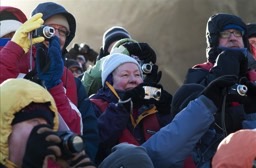
1 Comment
Our trip to Botswana and on to Victoria Falls was an epic adventure experience. Other activities I would also recommend are whitewater rafting the Zambezi River, flying a microlight over Victoria Falls, and jumping into Devil’s Pool and sitting at the edge of Victoria Falls. Of all the amazing countries I have traveled to I would say that the Zambian people were the friendliest most kind people I have ever met.